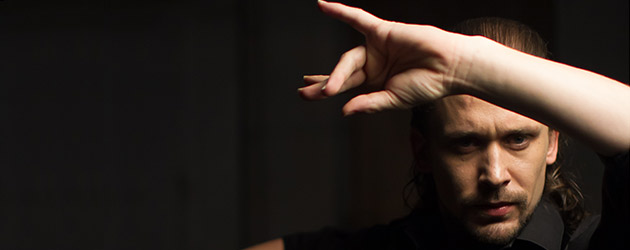Interview with dancer Alfonso Losa who presents us his project of on-line dance instruction.
Dancer and choreographer, with a long professional background , Madrid dancer Alfonso Losa talks about his on-line teaching project, a method based on his own experience and learning process, and which aims to transmit his knowledge of dance via the web.
Just so no one has any doubts about the intent, the name is clear, www.clasesdeflamencoonline.com , and upon opening, Alfonso himself explains, in six languages, the nature of this novel method.
How are you Alfonso? I imagine you have many projects underway, and I understand you’re interested in spreading news about this new method.
I’m fine, and happy that this project has finally seen the light of day, after thousands of hours and a great deal of effort that involved choreographing 120 lessons, each one totally different, representing the
different flamenco forms.
How long have you been giving classes and where? When did you feel the need to record these videos?
I’ve been teaching 15 years non-stop, my general classes in Amor de Dios, and numerous courses throughout the world.
I believe my way of teaching can help people take note of what’s important in order to learn better and faster.
It was also very important that people be able to study everything for a very reasonable Price, and thanks to a system of invitations and one single payment of 25 euros, they have complete access to the web.
Teaching via videos is one of the most common tools. Why are these videos any different from the rest?
These videos have the same viewing angle as an actual live class, in other words, you see me from the back with the reflection in the mirror and a close-up of the feet in the other section.
The sound was recorded with four microphones, and the synchronization is perfect.
I believe it is very easy to learn in this manner, more so than with videos filmed from the front.
here’s a free lesson anyone may see.
What’s that about dissecting the steps and seeking out the weight?
That’s what I was saying earlier, so that people can learn faster and better, I dissect the steps and study each part, at the same time I count everything out so the rhythmic assimilation is greater.
As far as the weight, it’s very important to know where the weight is at each moment, because it’s what helps make the transition to the following movement so that everything is natural and fluid.
How important is the rhythm and the musicality of the choreography you teach?
The rhythm and shading, which is the intensity you use to strike the floor or carry out a movement, in my opinion this is essential because at any given moment it’s what gives the flavor.
In all the material at the web I deal with this constantly, because the actual technique of the choreographies isn’t complex, so anyone with basic knowledge can benefit, and it can also be used by advanced students.
You talk about seeking out the details as something important, it’s not just technique.
In my opinion, this is the most important thing, because in the modulation and shading of the sound and movement, accelerated or held back, that’s where the art is.
How many flamenco forms can one learn, and how many videos are there for each form?
For now, the web has bulerías with 23 videos, soleá por bulería with 16, alegrías with 15, tangos with 14, siguiriya with 13, martinete with 12, tientos with 13 and a section of marking time with 17 videos, but I plan on adding more videos very shortly.
It’s also important that the organization of the web makes for easy handling by forms and numbered lessons.
What if the student makes a mistake? There are bound to be common errors that are repeated one way or another.
To round out the project it occurred to me to show a student working right there with me whose common errors I correct in each lesson, and everything is translated into 5 languages.
You mention that once the method is assimilated by the students, they will find it easier to learn from other teachers.
Yes, because this method is based on my own learning experience, the idea is to show what’s important in order to learn better.
You need to know where your weight is, how to shade the sound and movement, and where the interesting rhythmic intent is to be found, this improves your ability to learn from any teacher.
What’s the difference between your style of dancing and your way of teaching?
My way of dancing has all the elements we’ve been discussing, but developed over a long period of time, and sometimes the student is overwhelmed, but my way of teaching is very slow and based on repetition.
Aside from this project, what else are you preparing? Where can we see you dance?
Right now I’m working on the show “Tendencias Flamenco a Tres”, which I presented in Suma Flamenca in 2013, and I’ve been fortunate because next year we’re going to be at many major festivals.
In addition, I’m preparing a new solo show for the 2014 Festival de Jerez.
I’m also taking part in a more theatrical show called “Poesía Flamenca” that will take me to Venezuela this winter.
So my plate is very full, but I’m happy.
www.clasesdeflamencoonline.com
